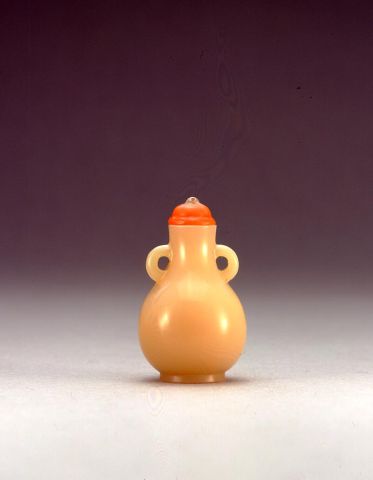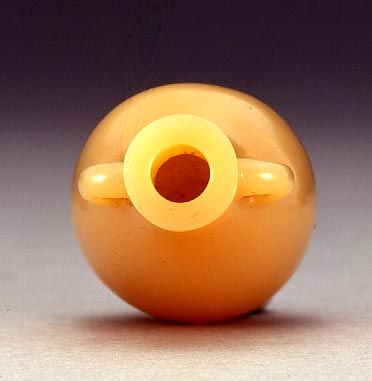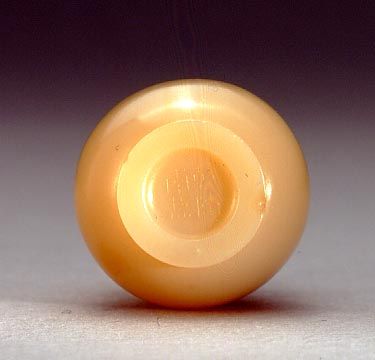


Bottle ID: 161
IMPERIAL VASE
Date: 1736-1795
Height: 34 mm
Nephrite, well hollowed, of small cylindrical form with tapering shoulders and neck, and slightly everted lip, the neck carved with ring handles, resting on a neatly carved footrim, the mutton-fat stone of a creamy pale honey color, the base incised with a four-character Qianlong nianzhi mark in seal script and of the period.
Imperial , attributed to the Palace Workshops, Beijing.
Similar Examples:
Crane Collection nos. 259 and 406
Sotheby's, London, June 21, 1995, lot 101, Collection of the Stone Picking Studio [Cai Shi Xuan] [agate]
Provenance:
Clare Lawrence Ltd.
Joseph Baruch Silver
Sotheby's, London, April 24, 1989, lot 299
Mrs. V. Smith, UK
Private collection of a Royal Navy sea captain, acquired Beijing, 1920
Exhibited:
Honolulu Academy of Arts, Honolulu, Hawaii, November 23, 1989 - January 7, 1990
Records show that there were eight imperial workshops based around the country; one of course within the Palace confines; another in Suzhou under the direction of the Imperial Silk Manufactory and centered in the most flourishing centre in China for jade carving. This is documented in detail through the writings and poetry of the Qianlong Emperor who reigned from 1735-1795. At this time Suzhou was an artistically thriving city with the demand for culture supporting a market for artwork, vying with the neighboring cities of Hangzhou and Yangzhou, of which the latter was exceptionally wealthy until 1810. Zhuanzhu Lane in Suzhou was known as the artist's quarter. There were a number of reasons for this. The governing reason relates to the impact that the Emperor Qianlong had on the jade market particularly in the latter half of his reign from around 1760 until his death at the end of the eighteenth century. A passionate collector of all works of art, he amassed a phenomenal collection of jade pieces from two sources - the Imperial workshops and from Imperial tributes sent to the court. The influence of the Suzhou carvers was significant, the artisans from Suzhou were sent to the Imperial workshops to manufacture jade wares, whilst many objects that were presented at the Palace originated in Suzhou. In a Beijing periodical of historical materials, the Shih-liao hsun-k'an, dated March 1931, it is noted that two brothers from Suzhou P'ing-chi and P'ing-pa possessed a secret method of carving jade and that their craftsmanship excelled that of any of the jade carvers in Beijing. The Emperor Qianlong ordered that one of the two brothers be sent for, together with his tools to carve for him in the Imperial workshops. It was reported that when P'ing-pa heard of the Emperor's wishes he replied:
"For a humble craftsman like myself to be summoned to the capital to serve there is a great honor. I am really very willing to go"
< Back to full list

 English
English 中文
中文